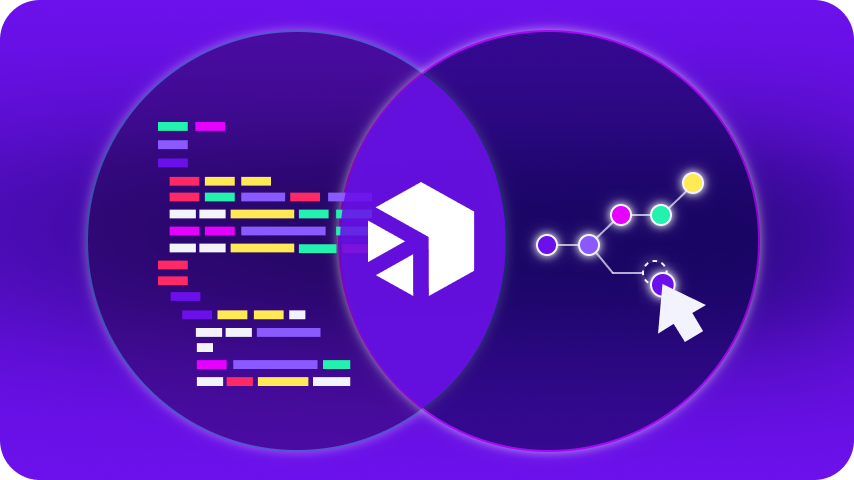October 28, 2022
Shifting from on-premises to a cloud environment delivers significant efficiencies for your financial services organization, allowing you to tap into important innovations and improvements such as automation, process support, stronger security, and the elimination of aging datacenters.
Yet, according to a recent McKinsey survey, cloud adoption in the financial services sector remains at a very early stage, with only 13% of organizations having half or more of their IT footprint in the cloud.
Fortunately, the industry isn’t letting the grass grow under its feet, with 54% of respondents expecting to shift at least half their workloads to the public cloud over the next five years.
But getting to the cloud isn’t always easy. This article will help you mitigate–and even avoid–many of the challenges your financial services organization may encounter, ensuring a smooth transition with minimal disruptions to the business.

1. Performance
Cloud environment performance is key to maintaining continuity and minimizing disruptions such as IT downtime that impact the business. Cloud performance issues are often due to availability, network latency, or application processing delays.
How to do it right
Before your migration process begins, it’s essential to:
- Identify which applications are best suited to cloud migration
- Understand application dependencies
- Make a plan for what you will migrate and when
- Become familiar with cloud integration platforms as they will allow for ideal performance
Make migration decisions based on data flows or business domains – not on which systems provide or receive data. Select technology that delivers the flexibility to migrate what needs migrating and keep other systems in place.
Decoupling data streams in completely isolated containers allows for both vertical and horizontal tuning. This model lets you optimize traffic between points, removing the performance constraints typically associated with cloud migration and putting the focus of analysis on endpoint capacity.
2. Cost Management
Cloud costs are climbing rapidly for many financial services organizations, with banks estimated to waste as much as 35% of cloud spending on inefficient activities. It’s vital to carefully manage costs, factoring in the duration and complexity of your transition to ensure a solid return on your investment.
How to do it right
There are a few ways to control the price of a shift to the cloud:
- Establish a cost management checklist to follow whenever you deploy new services
- Base all organizational cloud usage on your company’s financial policies
- Budget specific amounts for different projects, departments, or categories and review regularly to ensure you’re on track
- Utilize cost reporting tools from vendors or third parties to ensure consistency
A platform-as-a-service model eliminates the need for upfront infrastructure investments and allows costs to be adjusted to match project scope without compromising the agility or scalability of your solution.
And while traditional cloud vendor tools focus solely on the transition, a cloud-based enterprise integration platform-as-a-service (iPaaS) can simplify your cloud migration process while also laying the groundwork for architecture modernization to support future efficiencies.
3. Governance
Financial services organizations face much greater scrutiny and regulatory oversight than many other sectors. The industry requires protocols for controls, processes, and documentation that meet strict guidelines.
Provisioning, infrastructure delivery, and operations are major challenges associated with cloud computing and the complexity involved in properly implementing, using, controlling, and maintaining IT assets.
Traditional governance models must be adapted to new environments to enhance security, manage risk, and avoid problems such as:
- Poor integration between cloud systems
- Data or effort duplication
- System and business goals unaligned
- Inefficient use or resources
How to do it right
- Ensure reuse and access standardization to systems, data, and business flows
- Keep cloud usage standards consistent with organizational and financial services regulations / compliance requirements
- Align cloud strategy with overall business and IT strategies to ensure cloud systems provide quantifiable support for business objectives
- Maintain clear agreements between all stakeholders so resources are used and shared appropriately
- Implement changes in a consistent, standardized manner
- Rely on monitoring and automation for dynamic event response
4. Operations Management
The problem of shadow IT and the unnecessary use of resources reduces operational efficiency and security while driving up costs. Robust cloud operations management helps overcome some cloud migration challenges. Service level agreements define expected performance levels, but continual monitoring is necessary to ensure SLAs are upheld as infrastructure components change.
Processes and checks must be implemented in alignment with industry and corporate standards before code is deployed to production, and security requirements and access controls must be in place.
How to do it right
- Active monitoring with execution control, error handling, and reprocessing rules
- Easy-to-use dashboard
- Logging and alert capabilities
- API management support for the creation, security, management, and sharing of APIs
- Ability to interact with existing ITSM tools to send logs, events, and metrics to central monitoring, email addresses, or messaging applications
5. Observability
Observability enables administrators to gather internal and external data on networked resources to monitor and understand their behavior, investigate anomalies, and improve performance and uptime.
But this can be challenging in a cloud environment, especially given the massive volume of data and components in cloud architecture. In fact, 75% of CISOs within financial services organizations say vulnerability management has become more difficult as the need to accelerate digital transformation has increased.
How to do it right
Make sure the observability tools you select support:
- Integration with existing tools and support for necessary frameworks and languages
- User-friendly interfaces to ensure they are used correctly and regularly
- Real-time insights through dashboards, reports, and queries so teams can quickly understand issues and their impacts
- Support for modern event handling and context techniques
- Visual presentation for rapid comprehension and action
6. Security
According to VMWare, in the first half of 2020, we saw an increase of 238% in cyberattacks targeting financial institutions. This frightening statistic emphasizes the need to ensure controls and practices that are in place for on-premises systems are adequate–or are replaced–to meet the requirements of cloud-based systems. Failure to support this transition could introduce new risks to your operation:
- Increased attack surface (public cloud has become a large, attractive target for cybercriminals)
- Insecure interfaces and APIs
- Lack of visibility and tracking, which can lead to reduced protections
- Workload flexibility – traditional tools can’t handle dynamic environments
- DevOps, DevSecOps, and automation, as well as appropriate controls must be identified early in the development cycle to avoid security gaps or delays
- Granular permissions and keys management, which can provide the wrong users dangerously high access levels
- Complex environments made up of public cloud, private cloud, on-premises deployments, and edge protection
How to do it right
Mission-critical resources must be deployed in logically isolated areas, and dedicated WAN links and enterprise-defined static routing configurations used to customize access to devices, networks, gateways, and public IP addresses.
Secure all distributed cloud applications and automatically update WAF rules when there is a measurable change in traffic. Be sure to apply and enforce all financial services security policies and processes consistently.
Employ encryption at every level of data transport, and deploy software that detects, identifies, and remediates threats in real-time.
Avoid Cloud Migration Challenges with Digibee
Digibee’s unique cloud native enterprise iPaaS model helps minimize the risks of these common cloud migration challenges that disrupt migration and architecture modernization processes, ensuring that your digital transformation is smooth and seamless. Our solution isn’t just about moving your data and processes to the cloud. Digibee helps future-proof your financial services operation so you’re ready for anything – including competing in a digital-first world.
Want to learn more about how your financial services organization can overcome cloud migration challenges with Digibee’s iPaaS solution?
Request a demo with our team now for more information.













